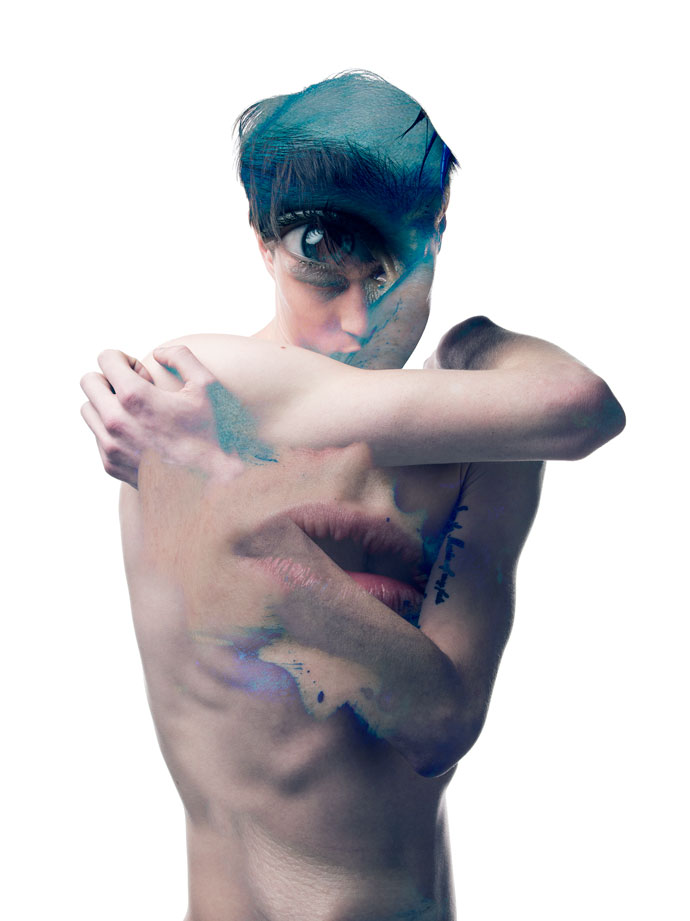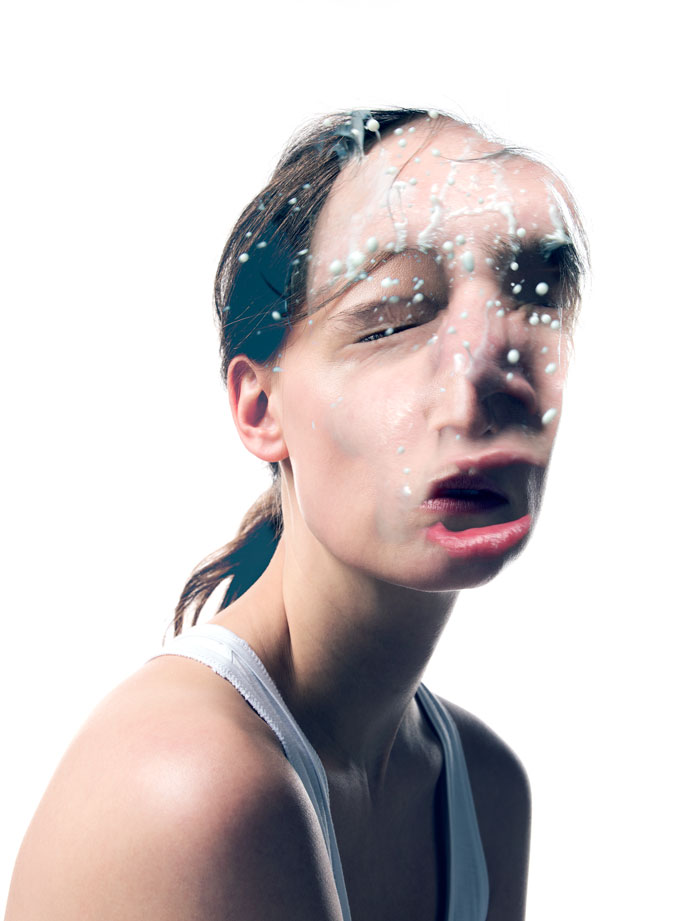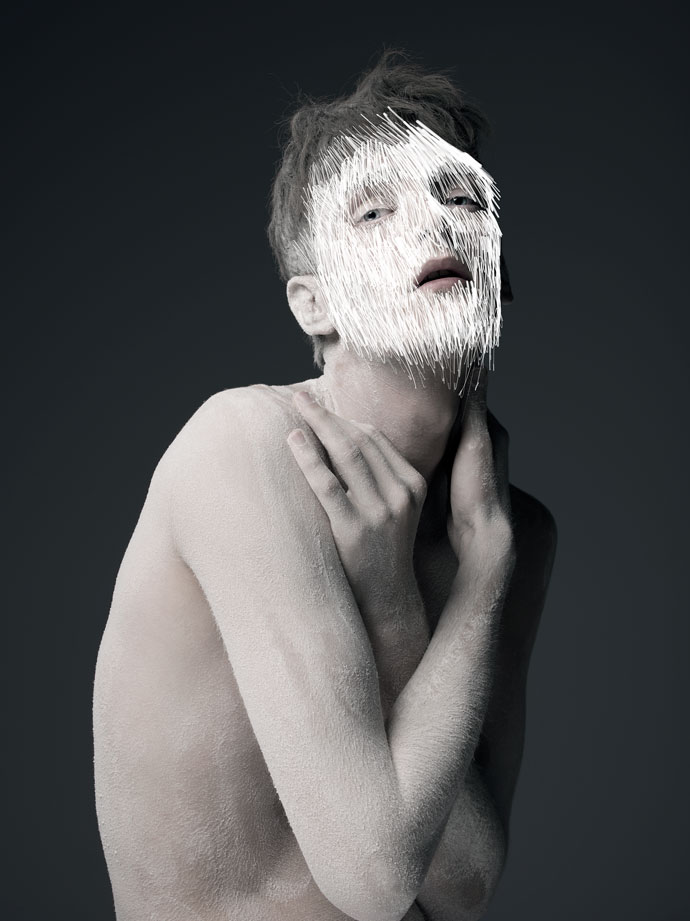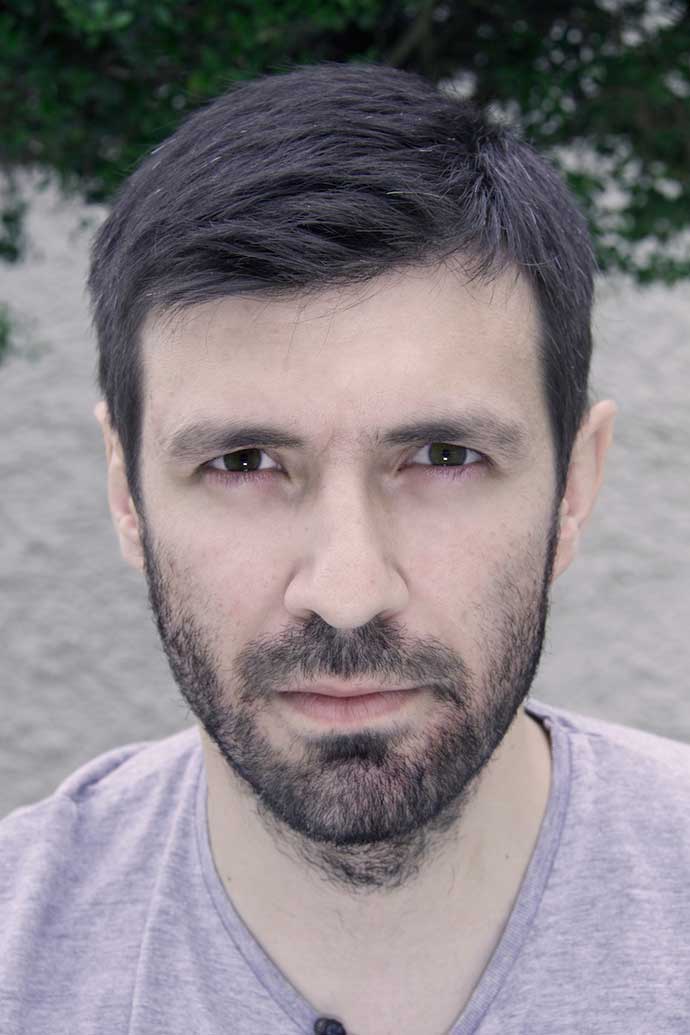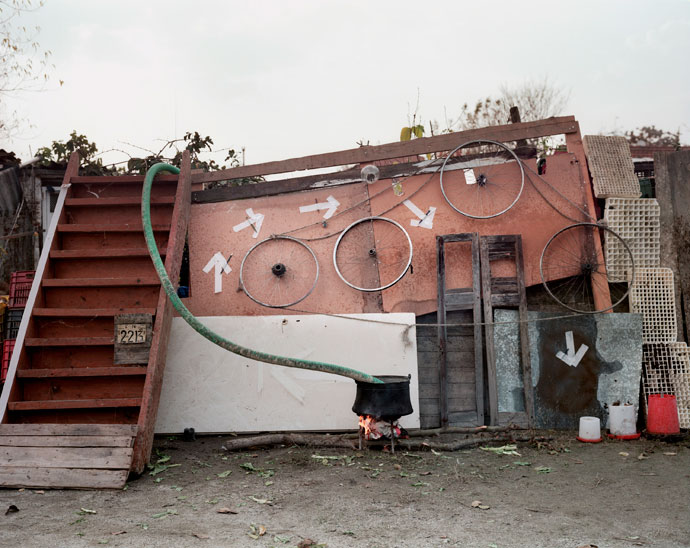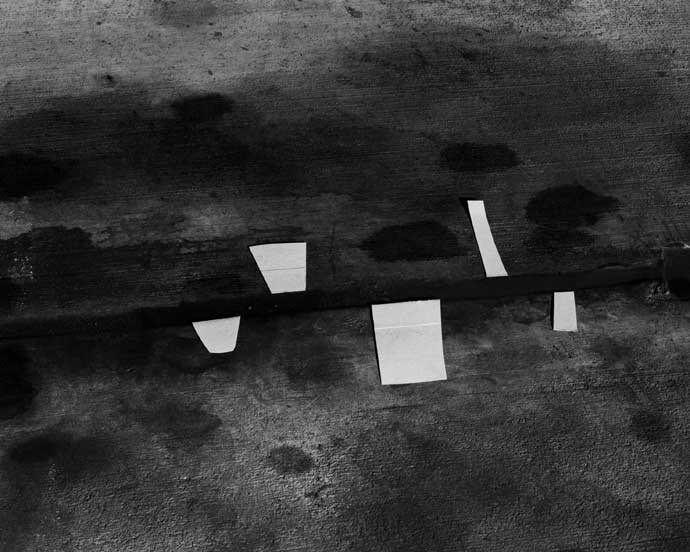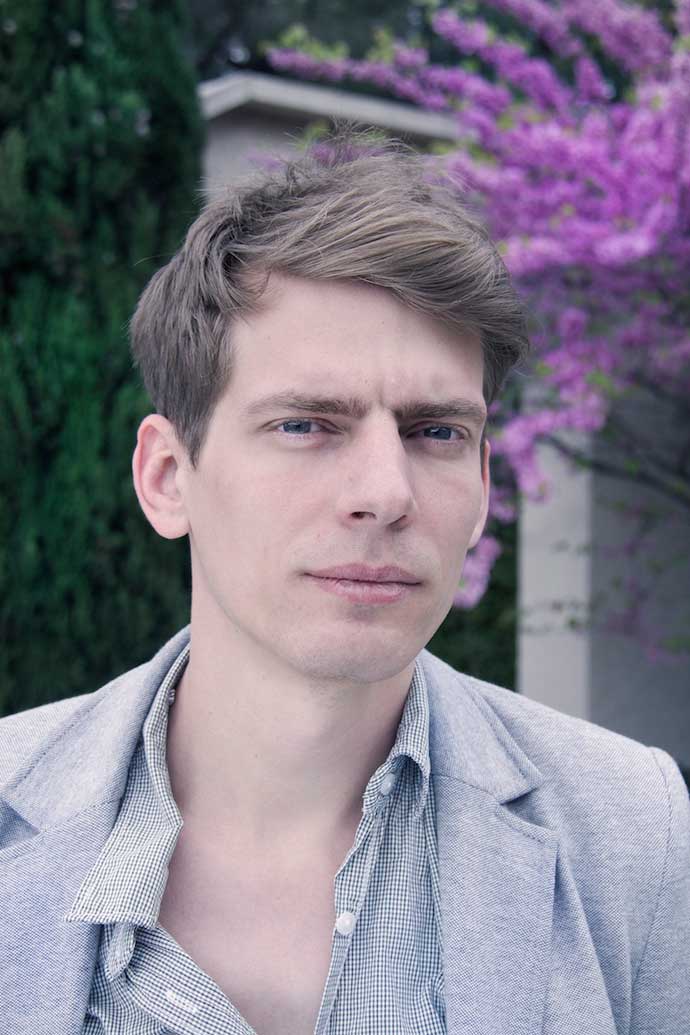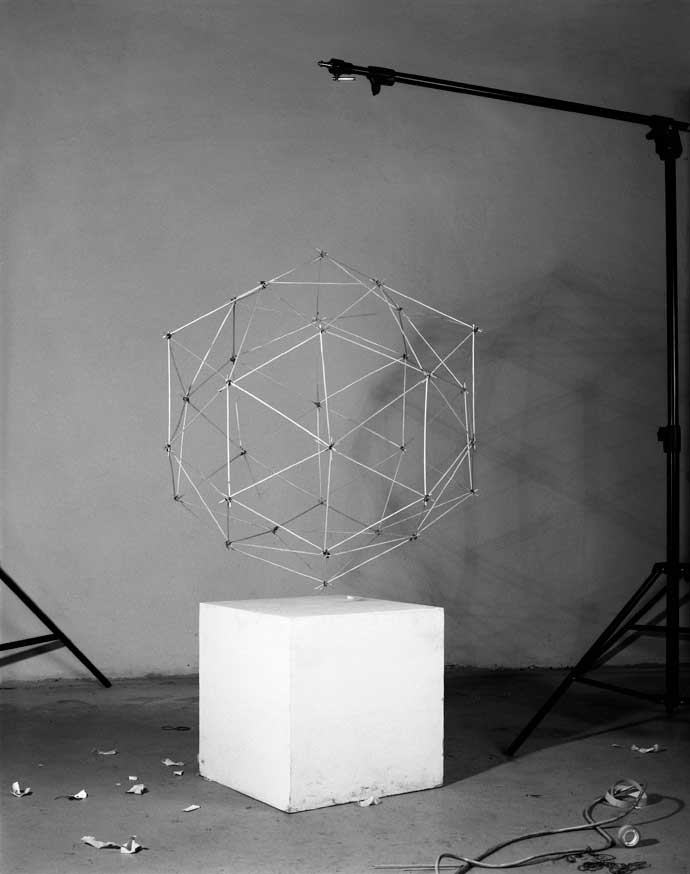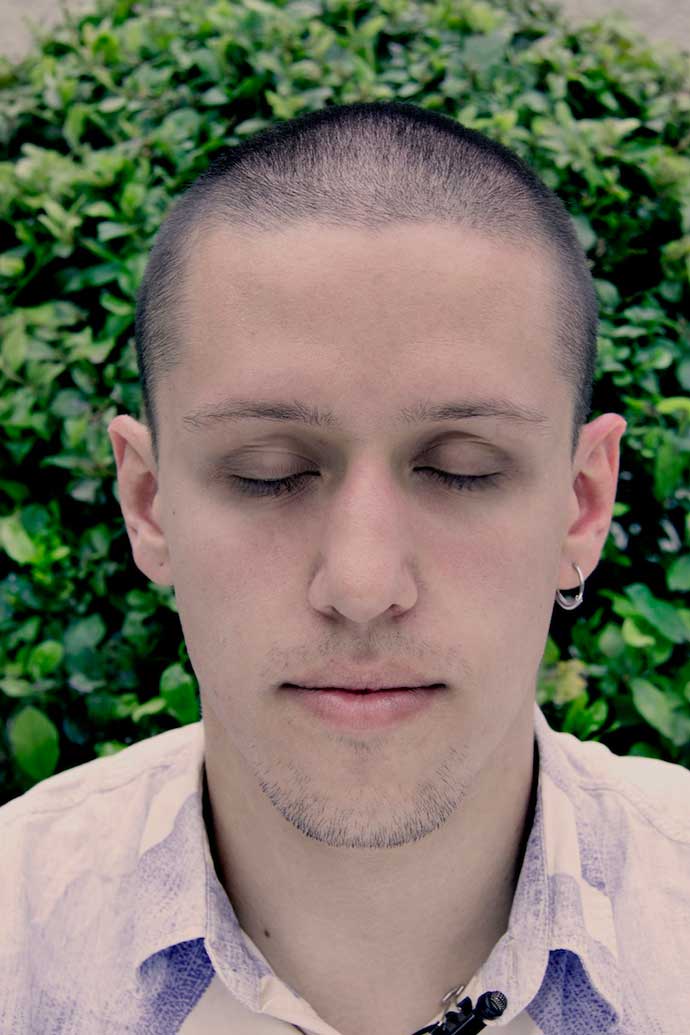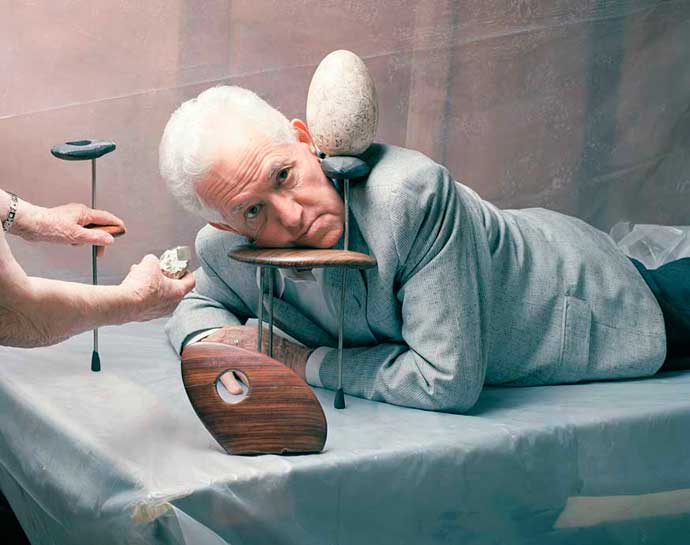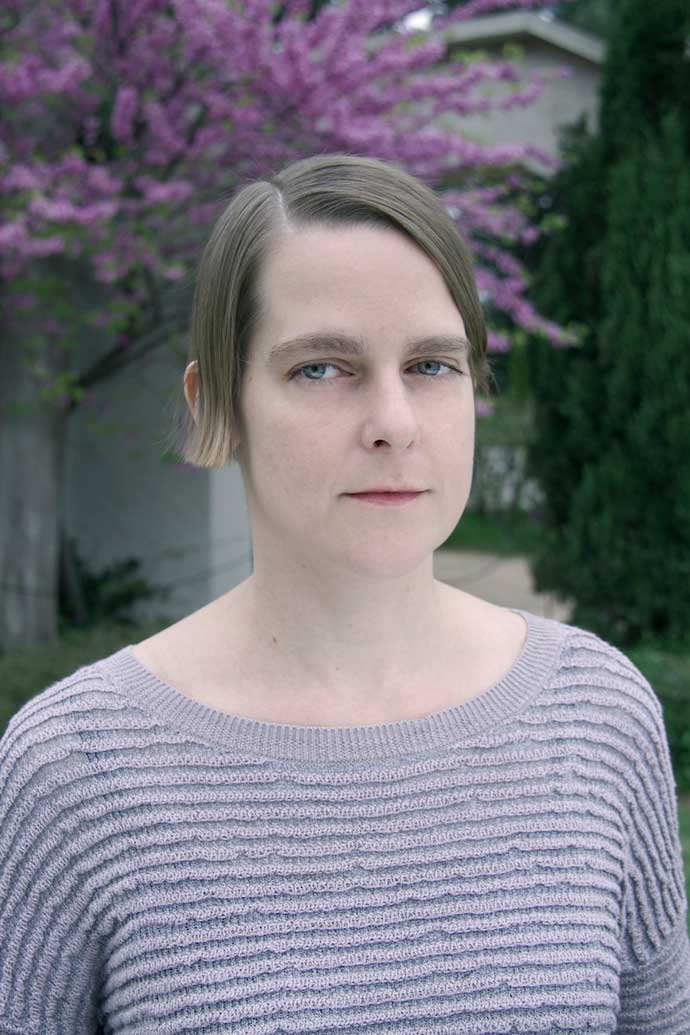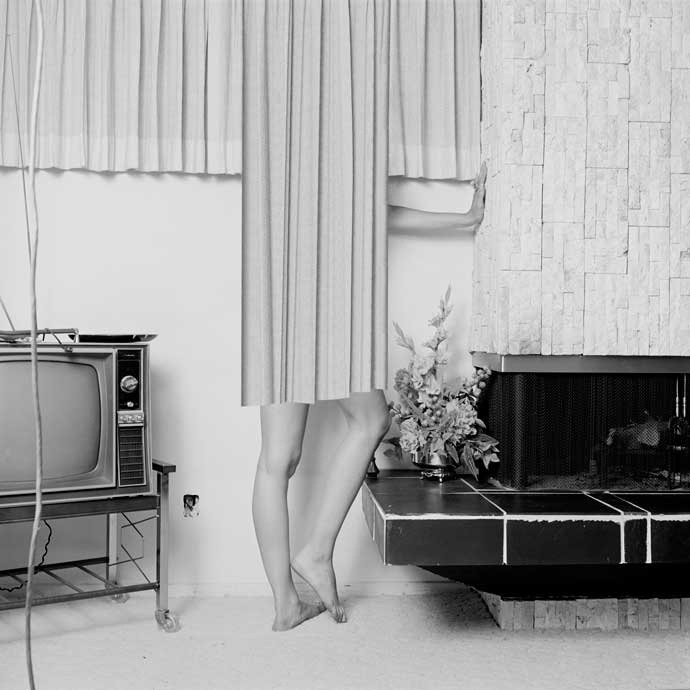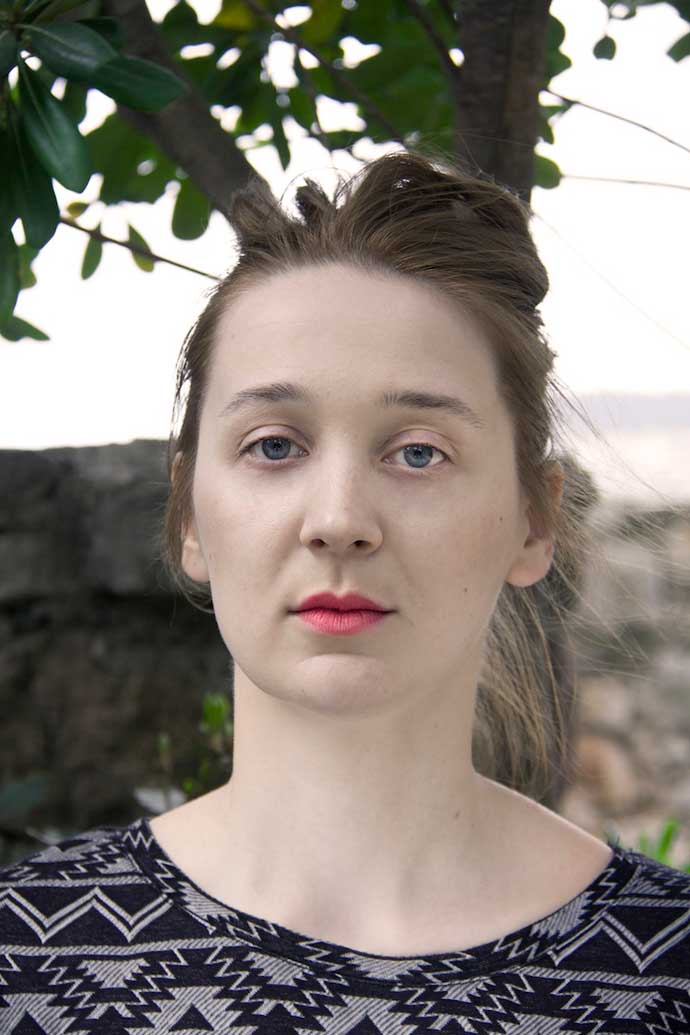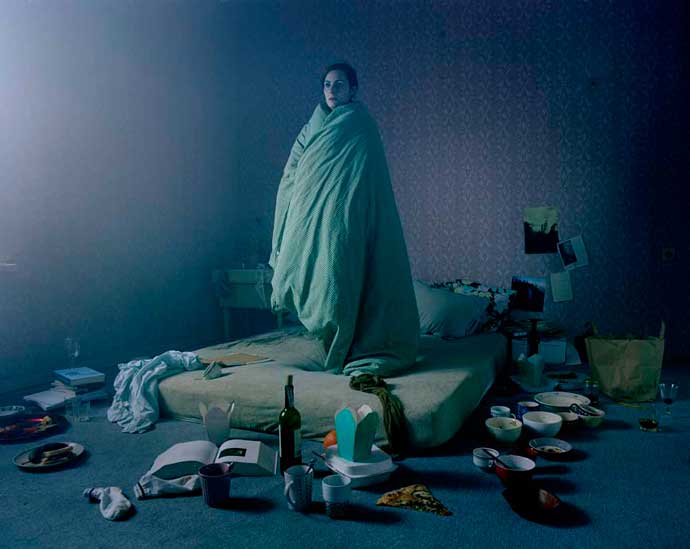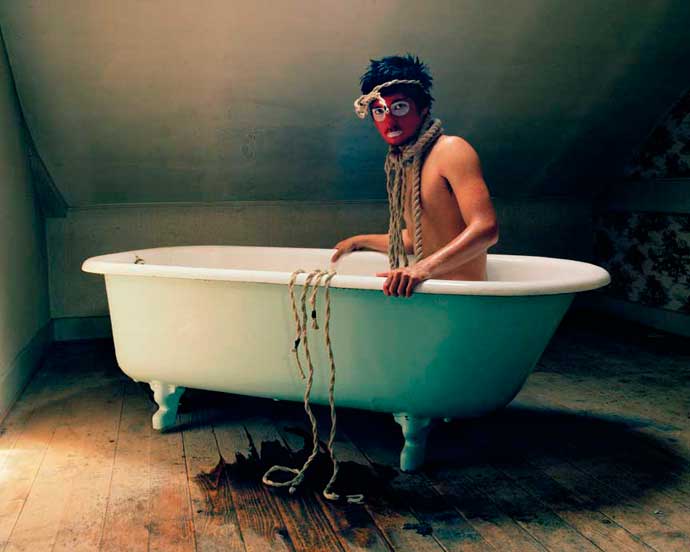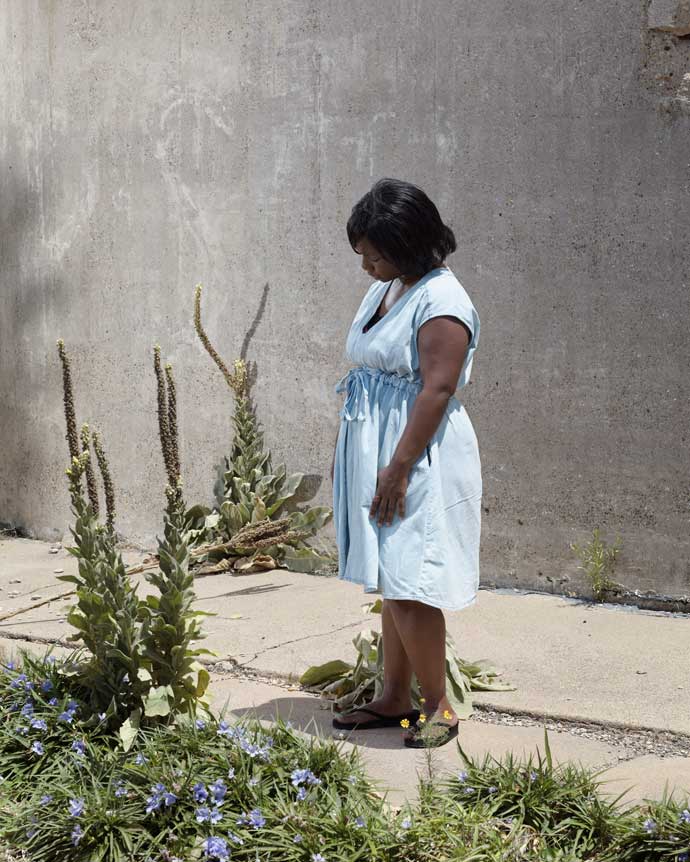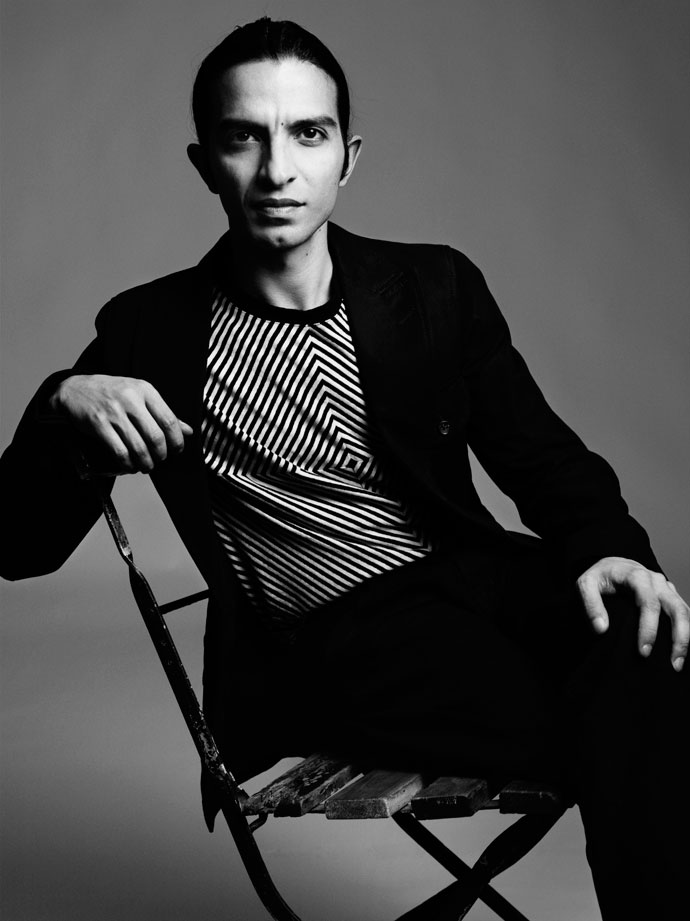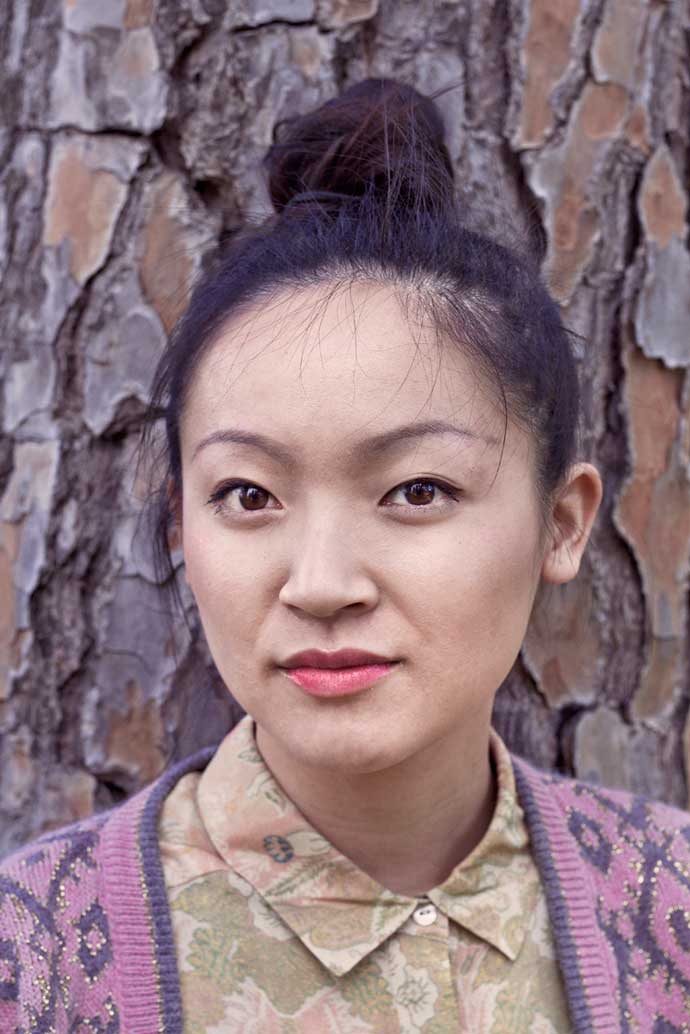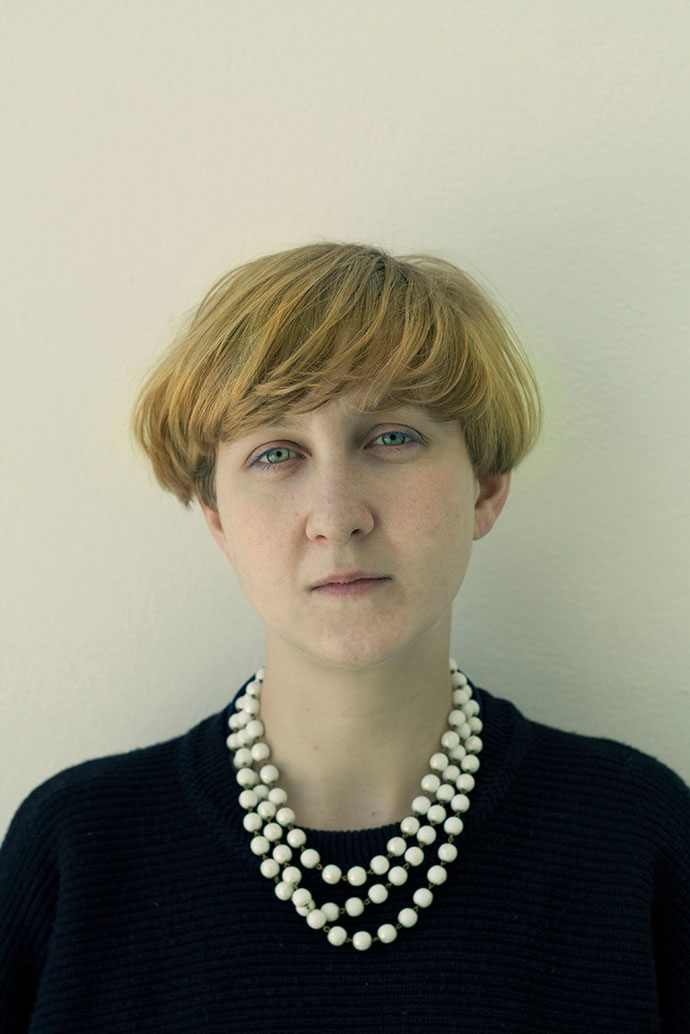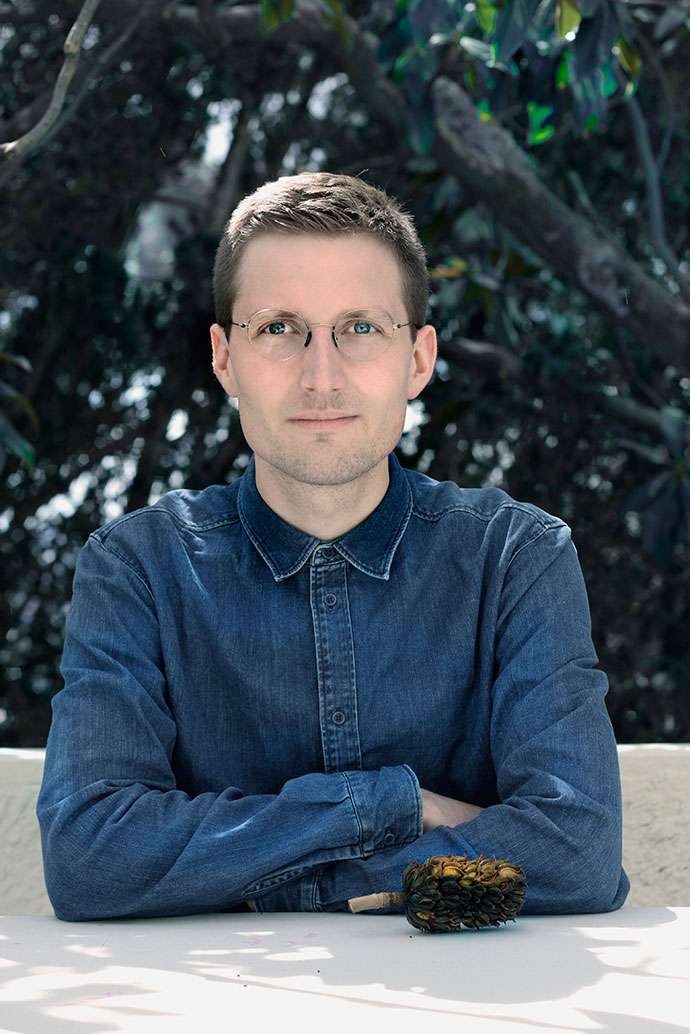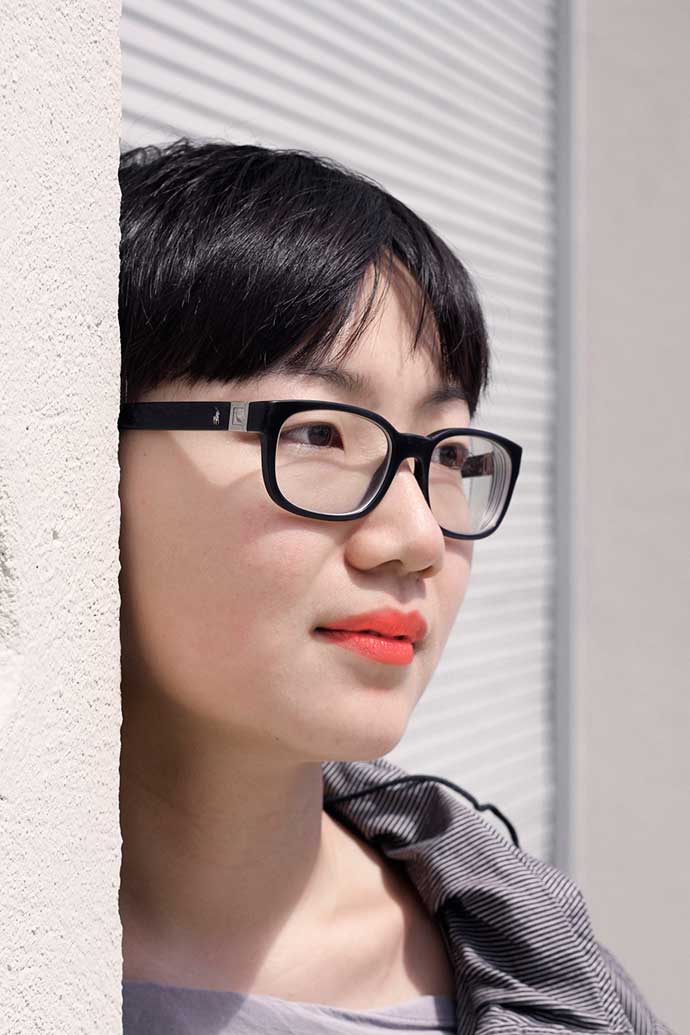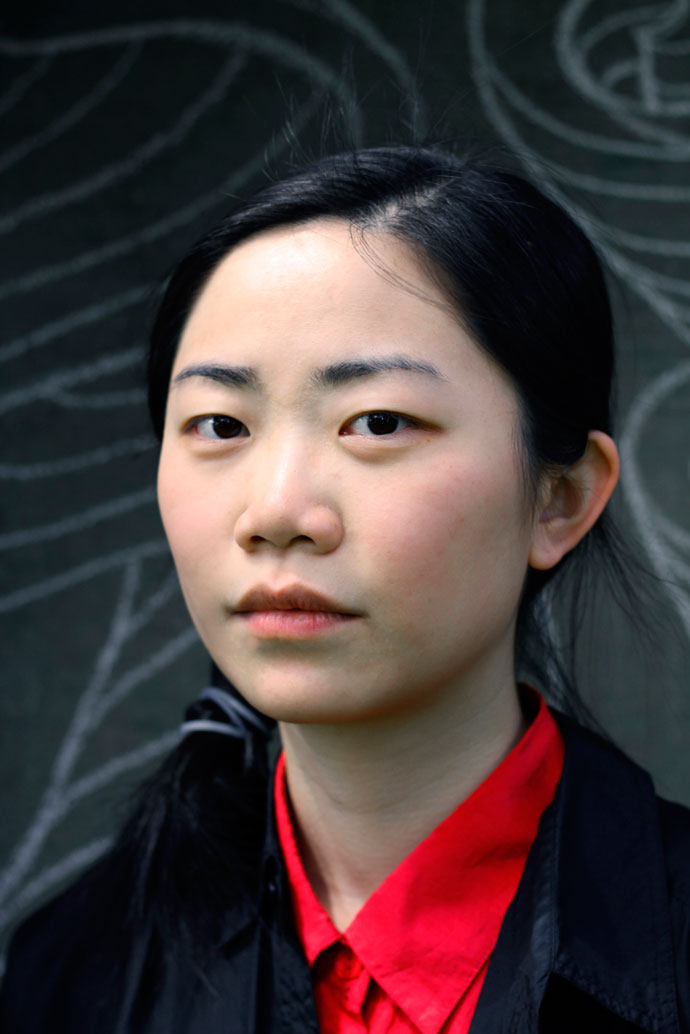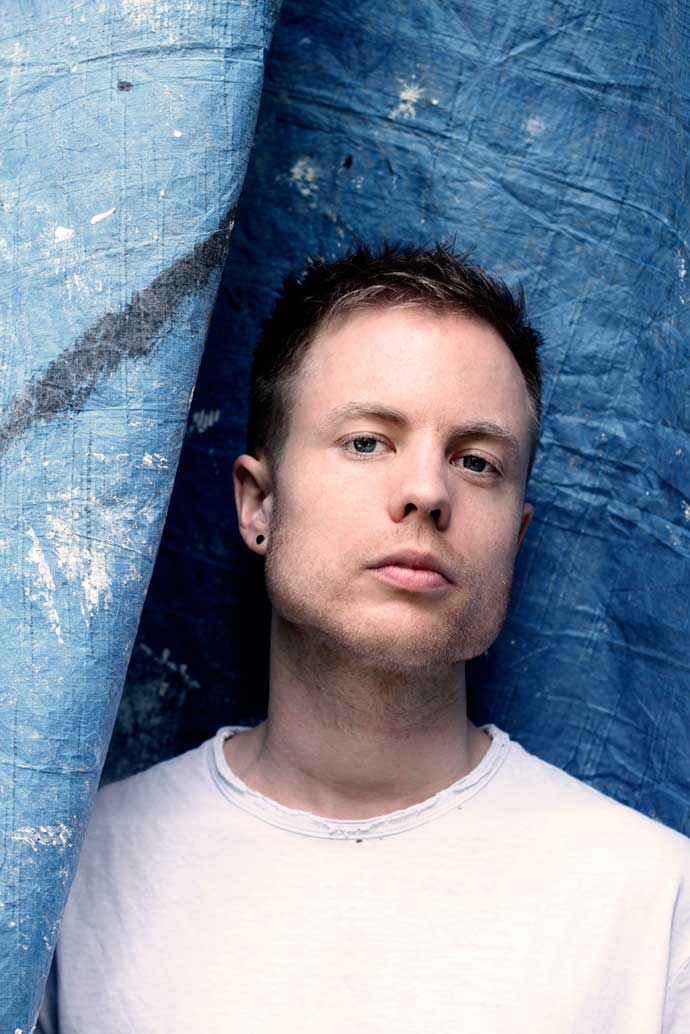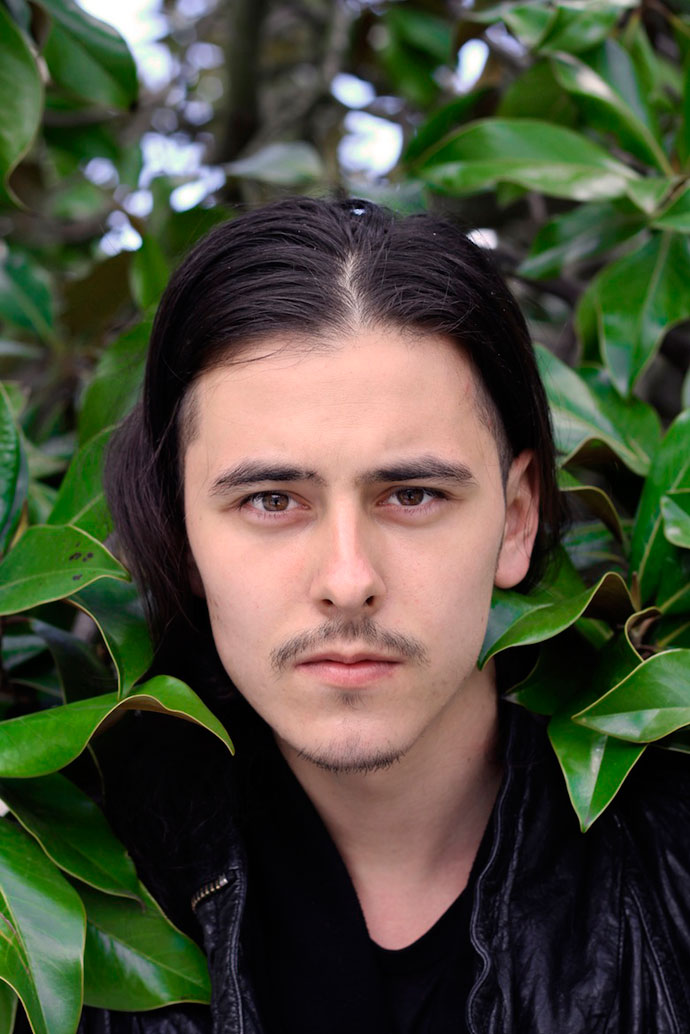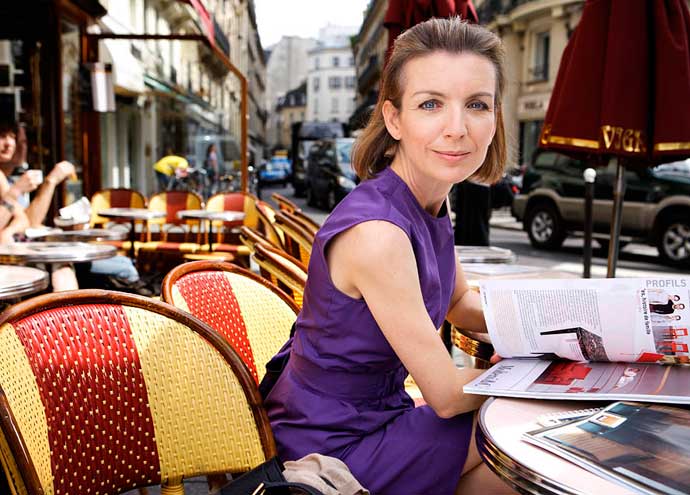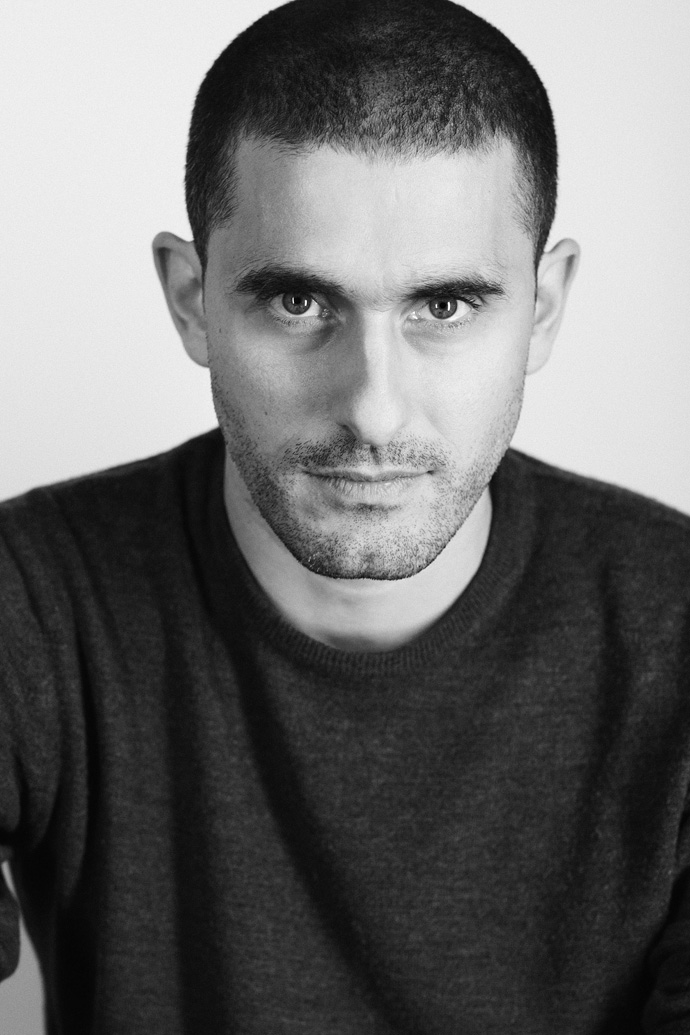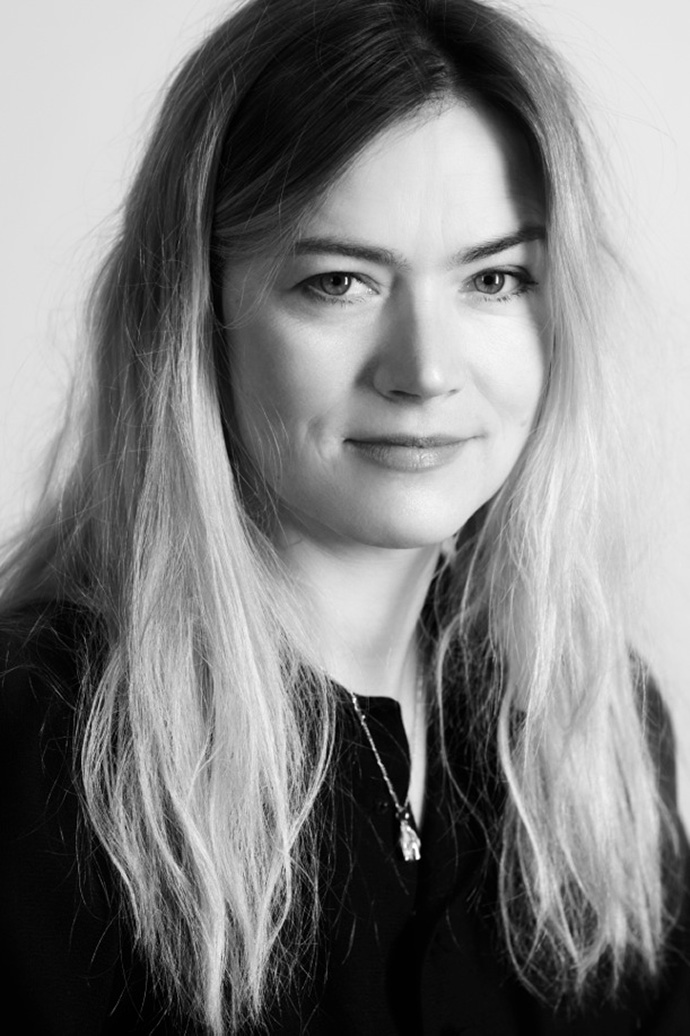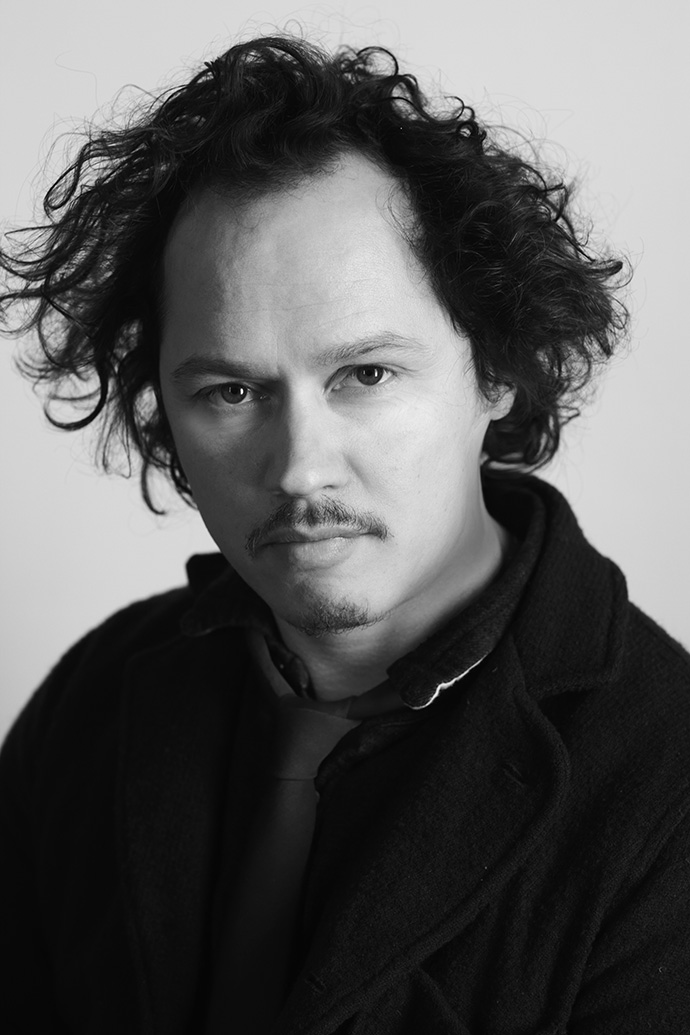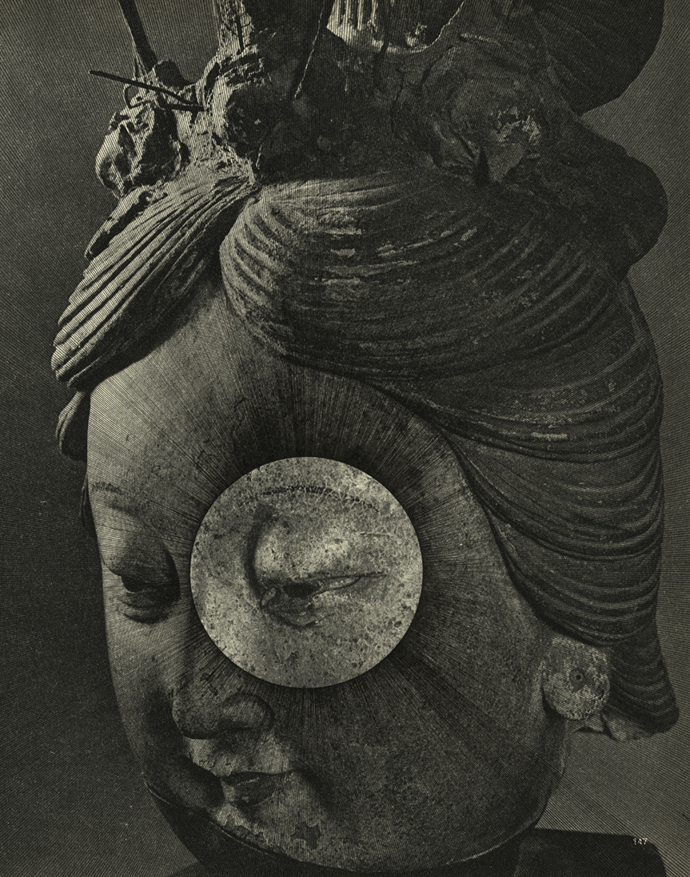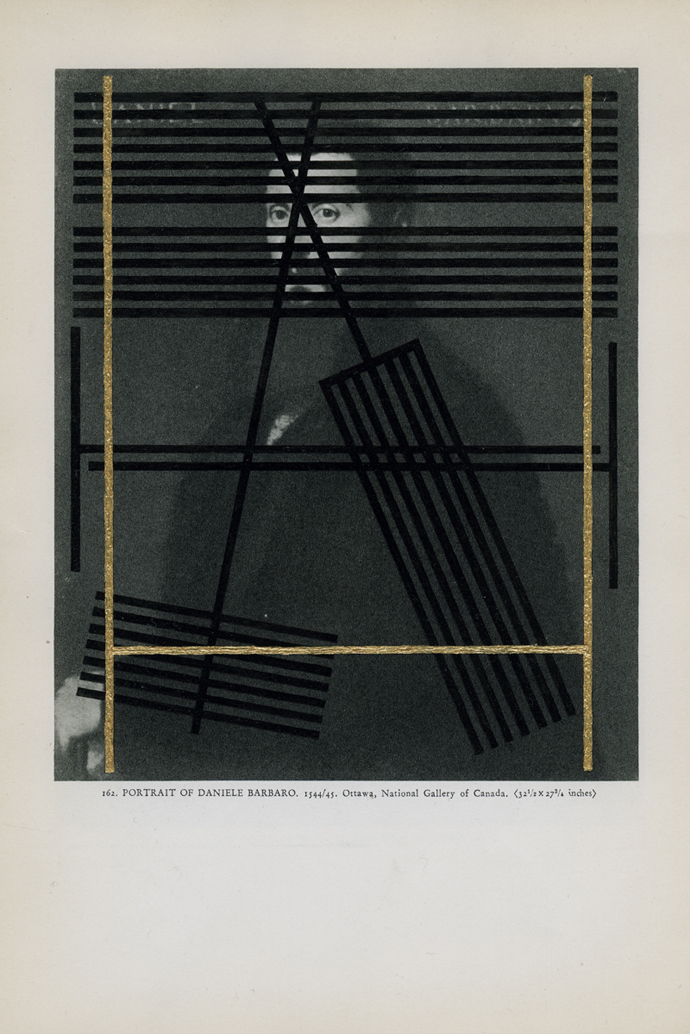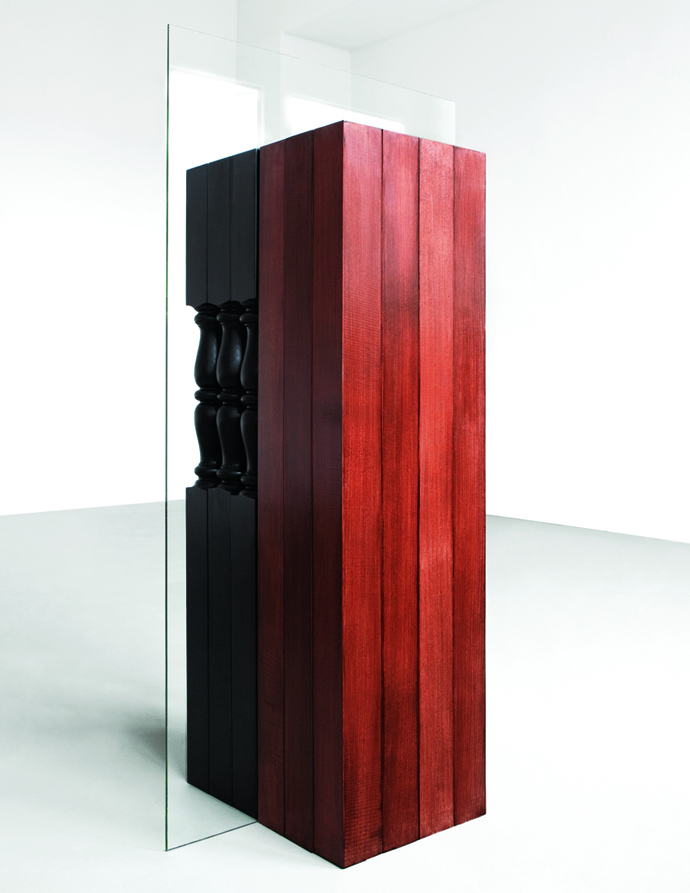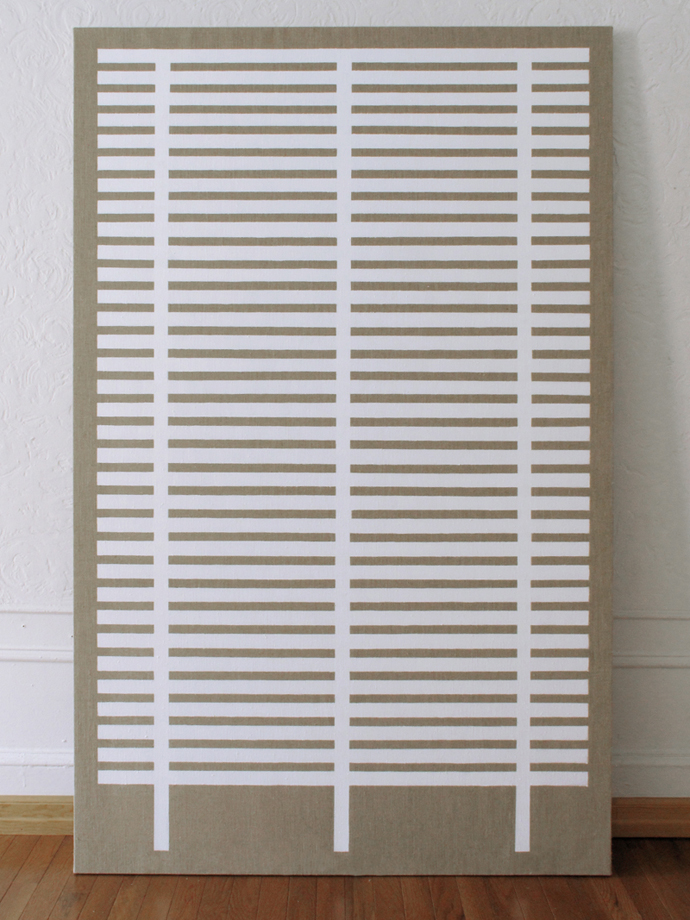-

HYERES 2013 EXPRESS 04 DESIGNERS + 05 FASHION SHOW
-Hyères Again. And Again.
28TH INTERNATIONAL FASHION & PHOTOGRAPHY HYERES 2013
HYERES EXPRESSA THE STIMULEYE PRODUCTION
directed by Antoine Asseraf
filmed & edited by Julien Pujol
coordination Clementine Colson
interviews Filep Motwary
sound design Ça Va Chéri00 -

HYERES 2013 EXPRESS 03 EXHIBITIONS
-Besides the photo and fashion competitions, one of the Hyères festival’s strongpoints are the original exhibitions it curates. Amongst this year’s shows, Lacoste designer and 2002 Hyères winner Felipe Oliveira Baptista, up and coming photo/video/grapher Pierre Debusschere, 2001 Hyères winner photographer Charles Fréger, and ROUGH PROOF, a look at the early works of Guy Bourdin with special pieces from the private collection of Marie Laure de Noailles… of course.
A THE STIMULEYE PRODUCTION
directed by Antoine Asseraf
filmed & edited by Thibault Della Gaspera
interviews Filep Motwary
coordination Clementine Colson
sound design Ça Va Chéri -

HYERES EXPRESS: PIERRE DEBUSSCHERE
-Having seen his work evolve over the years, we are proud to announce Pierre Debusschere’s new project premiering at Hyères Fashion & Photography Festival, an installation featuring original photo and video, “I know simply that the sky will last longer than I.”
Pierre Debusschere, Portrait by Filep Motwary.
Is this your first solo show?
I did small solo shows before but i like to think of this one as my first one because it is the first time the work has been thought of for an exhibition medium.How does it feel exhibiting alongside someone like Guy Bourdin?
It is already an honour to be present at the Villa but even more to be next to Bourdin.Your subjects-models are worked in a way to look like paintings, what is your aim exactly ?
The painting, the Flemish painters are a big influence for me, there is no specific aim linked to the painting besides the connection to my inspirations.
The technique that looks like paint that you are referring to is there more in the idea layers, different layers that gives the image different steps of reading.Photo by Pierre Debusschere.
Photo by Pierre Debusschere.
Your show’s theme is beauty versus ugliness. What are your true influences? Is it connected to the work of Umberto Eco ?
Beauty versus ugliness is one of the themes worked in this show, the idea of what is beautiful or ugly today. Yes it is linked to Eco’s work, reading his book
on ugliness helped me a lot in this show.Your work is tied to the digital medium. Can you imagine yourself working in a previous era ?
For sure I can see myself working in a previous era, it is not about digital, it is more about the medium that fits the time, the idea of NOW.Photo by Pierre Debusschere.
You have created yourself a whole structure with 254 Forest, which allows you to do an original photo series, a book, an installation and a film… How important is organization to be an artist today ?
Yes I would not have been able without my team to create the photo-series, the book, the installation, the film, the soundtrack and the website !It is always about Team work for me and I’m really grateful to have them besides me. Organisation is a big part of the work, even more for project like this when we created all this body of work in 2 months. Today you need to be able to react really fast because of the technology era we live in, so that’s why a team is important too !
You need to be present on every aspect of production at the same time ! But then we can not forget sometimes that we need to disconnect ourselves 😉
-

-

-

-

-

-

-

-

-

-

HYERES 2013 EXPRESS 02 DESIGNERS
-The festival is about to start. In 1 hour the jury headed by Felipe Oliveira Baptista will discover the 10 designers in competition for the first time.
A THE STIMULEYE PRODUCTION
directed by Antoine Asseraf
filmed & edited by Julien Pujol
interviews Filep Motwary
coordination Clementine Colson
sound design Ça Va Chéri -

HYERES EXPRESS 2013/ JURY PREVIEW / IMRAN AMED
-One of the most unexpected and influential sites in fashion today is Business of Fashion. Imran Amed, its founder and editor, answers our questions before joining the Hyères 2013 Fashion jury.
Photo by Scott Trindle.
AntoineAsseraf: Along with Industrie Magazine and the rise of the fashion blogger as a class, your blog has drawn attention to a lot of work, which was heretofore considered a bit peripheral to a designer’s raw talent. What do you make of a place like Hyères that still somehow naively stresses the belief that talent will find its own way? If you were to create a Business of Fashion competition/festival, how different would it be?
Imran: At BoF, we firmly believe in the power that lies at the intersection of creativity and business. Both are essential to a successful fashion enterprise, and one can’t work without the other. It’s a true symbiotic relationship. If we were to do a BoF festival therefore, it would be a combination of creative fashion presentation and business plan pitches, and the judges would come from both sides of the industry.
FilepMotwary: It seems to me that many of the young designers who dream of a future in fashion are unaware about “the business” of fashion in general. Should they worry of how things have evolved, and turned the industry into this huge marathon of task, values that need to be constantly re-valued, trends that suffers from the lack of longevity etc…?
Imran: I tell my students that once they start their own business, they will spend 90% of their time managing the business, and only 10% of the time designing. This balance is not something that has necessarily changed in recent years, but it’s true that there is more and more for a young designer to do in the global, digital fashion world in which we live today.
Sean Santiago: The internet and its popular content-sharing platforms, i.e. Tumblr and Pinterest, are destabilizing traditional revenue streams faster than new ones are being created. How will original creative output find funding in the future and do you see crowdsourcing methods such as, for instance, a Kickstarter campaign, possibly becoming necessary to the creation of original artistic output? Or will a big brand always foot the bill when it comes to fashion-related content?
Imran: Brands and designers could certainly fund portions of their businesses — say specific collections or products — via crowdsourcing platforms. But ultimately, I suspect that they will need to turn to traditional forms of fundraising (selling equity or taking loans) in order to fund the business over the long term. A young fashion business is highly cash flow intensive, and therefore will likely require stable and planned funding in order to fuel growth and expansion.
Malibongwe Tyilo: BOF is recognized as one of the boldest voices in fashion writing, often publishing pieces that might not be appreciated by some PR people. Considering how important PR has become to design companies, how does that affect how the design businesses deal with you?
Imran: We are bold, but I believe we are also fair and balanced. Part of the role we see for ourselves at BoF is to surface and shed light on important industry issues that merit wider discussion and debate.If we can do so in a way that is balanced and fact-based, then most PR professionals seem to respect us for that.
Certainly, there are some who would prefer to control all the communication about their clients, but this is misguided and unrealistic.
28th International
Fashion & Photography Festival
Hyères 2013
April 26>29 -

HYERES EXPRESS 01 PREVIEW
-Less than 48 hours before the beginning of the festival, we bring you our first HYERES EXPRESS video, a quick preview with the people who make the Hyères Festival – founder and director Jean-Pierre Blanc, photography director Raphaelle Stopin, and fashion director Maida Gregory-Boina.
A THE STIMULEYE PRODUCTION
directed by Antoine Asseraf
filmed & edited by Thibault Della Gaspera
interviews Filep Motwary
coordination Clementine Colson
sound design Ça Va Chéri -

HYERES-EXPRESS 2013 DESIGNER PREVIEW: YVONNE POEI-YIE KWOK
-Netherlands (25). and last year I graduated from the Amsterdam Fashion Institute graduate (2012). She is now in research of possibilities to start her own label.
Portrait Filep Motwary.
How does it feel for you being selected for this year’s edition of Hyeres ?
It’s an honor to be selected for one of the top fashion competition in the world. It’s really nice to be in the South of France, meeting new people and working in a nice environment.How would you describe Hyeres in three words ?
Beautiful, cozy, atmospheric.What has been your favorite part of the process so far ?
Working in the garden at the Villa Noailles with sunny weather and great surroundings.In three words, what is your collection about ?
Marionettes, handwork and youthfulness.In what ways you think participating in a Festival like Hyeres will help you in the future ?
I think it’s a great platform to present yourself internationally. Getting in contact with different company’s, people in the industry and press is a great starting point to start your own label or to work for a fashion brand.28th International
Fashion & Photography Festival
Hyères 2013
April 26>29 -

HYERES EXPRESS 2013 / DESIGNER PREVIEW / XENIA LUCIE LAFFELY
-Swiss. Studied history of art and modern French before starting fashion design at the HEAD-Genève. About to start an internship at 3.1 Phillip Lim, with the prints team.
Portrait by Filep Motwary.
How does it feel for you being selected for this year’s edition of Hyeres?Three years ago when I came to the festival for the first time, it was love at first sight so to be a part of it today is a great honoured and I’m so touched and excited.How would you describe Hyeres in three words?
Warm, sharp and respectful.What has been your favorite part of the process so far?
Drawings and making collage.In three words, what is your collection about?
Preciousness, sentimentality and drawings..In what ways you think participating in a Festival like Hyeres will help you in the future ?
It will help me to be more aware of my own work and of the fashion world.28th International
Fashion & Photography Festival
Hyères 2013
April 26>29
HYERES EXPRESS 2013 / DESIGNER PREVIEW / HENNING JURKE
-Germany, Berlin. 28 years old. Studied at The Berlin University of the Arts, gratuated in October 2012. Working on his portfolio.
Portrait by Filep Motwary.
How does it feel for you being selected for this year’s edition of Hyeres?
Being selected feels like a dream came true.
How would you describe Hyeres in three words?
Inspiring, pleasant, fantastic.
What has been your favorite part of the process so far?
To meet the team of the Hyères Festival. It is great to have this people who give the support for me and my work.
In three words, what is your collection about?
Anticipation, melancholia, luck.
In what ways you think participating in a Festival like Hyeres will help you in the future?
The Festival is a great platform to represent me and my work as a designer. The team helps each designer , giving a great support with the shows and also the showroom. I hope to find a job as a designer in a house…28th International
Fashion & Photography Festival
Hyères 2013
April 26>29
HYERES EXPRESS 2013 / DESIGNER PREVIEW / SHANSHAN RUAN
-A Chinese national living in Paris who graduated from ESMOD, and works as freelance for a Japanese fashion houses and fashion galleries.
Portrait Filep Motwary.
How does it feel for you being selected for this year’s edition of Hyeres ?
Unexpected and magic! I ‘ve been following Hyères while I was still a fashion school
student and I never got the time and the courage the send my file. Now it has been three years since my graduation and I would love to do something for my own, without too much restriction. It’s great Hyères gave me this opportunity.
How would you describe Hyeres in three words ?
Energy, Exchange, Experience.
What has been your favorite part of the process so far ?
Hyères allows us to work with the professionals from the fashion industry. I mean not only the ‘Glamour’ part of fashion, but also the very ‘technique’ part, the fabric and accessories suppliers, the production factories, the dyeing experts, the pleating artisan. It is great to get to know them and to work with them. I’ve learned so much.
I appreciate their patience and kindness, without their help I will never complete the
collection as I expected.
In three words, what is your collection about ?
Movements, Sentiments,Memories.
In what ways you think participating in a Festival like Hyeres will help
you in the future ?
Hyères gives us opportunities to know people, to build the connections, but also, get us , designers known by other people, to let people hear our voice, know about our work, our stories. Hyères is not just an event that happens and ends, it’s a continuation.28th International
Fashion & Photography Festival
Hyères 2013
April 26>29
HYERES EXPRESS 2013 / DESIGNER PREVIEW / XING SU
-From China/Northern Ireland/Canada. Age 26. Studying at Fashion Institute of Technology, NY.
Portrait by Filep Motwary.
How does it feel for you being selected for this year’s edition of Hyeres?
It is an incredible compliment to be selected for a fashion festival with such a long and distinguished history. I’m excited and a bit anxious.How would you describe Hyeres in three words?
A warm fantasy.What has been your favorite part of the process so far?
Working with an amazing professional team to elevate a first collection and being surrounded by other designers who share similar goals, ideas, and opinions about fashion.In three words, what is your collection about?
Play and balance.In what ways you think participating in a Festival like Hyeres will help you in the future?
Exposure and publicity are so critical to one’s success in fashion now, and I can’t imagine a better platform than the Hyeres Festival.28th International
Fashion & Photography Festival
Hyères 2013
April 26>29
HYERES EXPRESS 2013 / DESIGNER PREVIEW / SATU MAARANEN
-Helsinki, Finland.Graduated this Christmas from Aalto University, School of Art, Design and Architecture. At the moment she designs prints and garments as a freelancer for different companies.
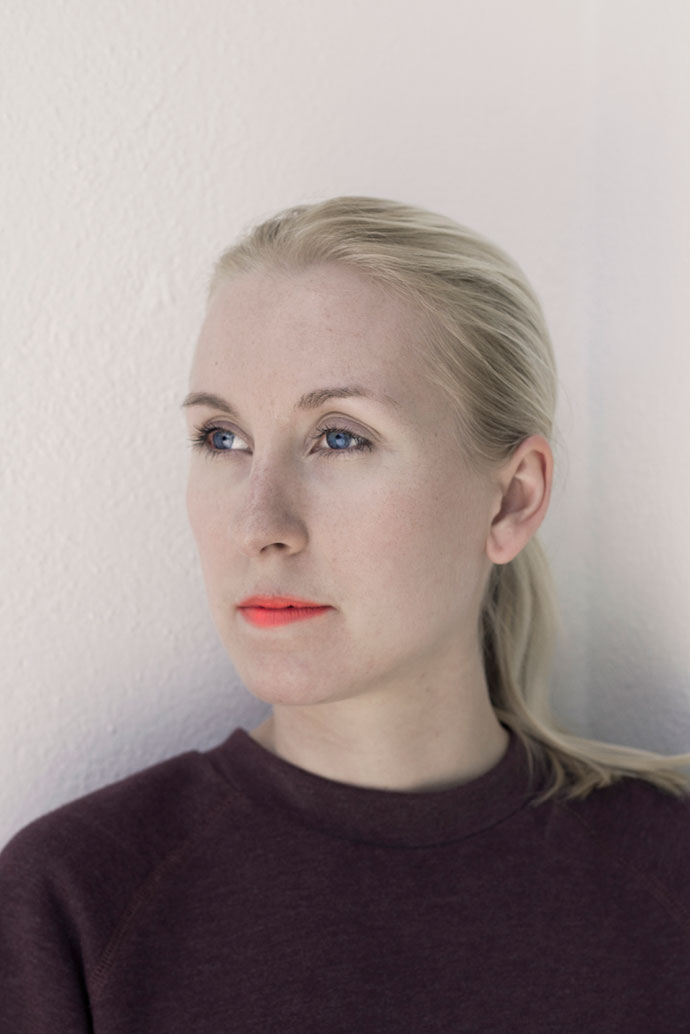
Portrait by Filep Motwary.
How does it feel for you being selected for this year’s edition of Hyeres?
It feels really great. I am superhappy about it. Hyeres is impressive opportunity to present your work for international audience.How would you describe Hyeres in three words?
Delicious food, sunshine and same-minded people.What has been your favorite part of the process so far?
The favorite part of the process has been doing all the openscreen prints. To do it freestyle is fun and relaxing for me.In three words, what is your collection about?
Landscapes, old Haute Couture and innovative materials.In what ways you think participating in a Festival like Hyeres will help you in the future?
It will help me to get new working opportunities and to create important connections. It is also going to be interesting to get feedback from all the fashion professionals..28th International
Fashion & Photography Festival
Hyères 2013
April 26>29
HYERES EXPRESS 2013 / DESIGNER PREVIEW / DAMIEN RAVN
-Norway (31). MA graduate from the Royal Academy in Antwerp. Runs his own label and teaches design for 3BA at the Fashion Department of the Warsaw Fine Arts Academy.
Portrait by Filep Motwary.
How does it feel for you being selected for this year’s edition of Hyeres?
Purely very honored.How would you describe Hyeres in three words?
Historic, impressive and panoramic.What has been your favorite part of the process so far?
Working together with all the sponsors to develop new parts of the collection especially for the festival.In three words, what is your collection about?
Bonded minimalistic maximalismIn what ways you think participating in a Festival like Hyeres will help you in the future?
I know Festival Hyeres is a wonderful opportunity to show your collection to the world and it will hopefully open some doors in the future.28th International
Fashion & Photography Festival
Hyères 2013
April 26>29
HYERES EXPRESS 2013 / DESIGNER PREVIEW / TOMAS BERZINS & VICTORIA FELDMAN
-Tomas Berzins / From Riga, Latvia / 21 years old / graduated from ESMOD Paris 2011 / co-owner of victoria/tomas label.
Victoria Feldman / From Moscow, Russia / 24 years old / graduated from ESMOD Paris 2011 / co-owner of victoria/tomas label.
Portraits by Filep Motwary.
How does it feel for you being selected for this year’s edition of Hyeres?
This is just great to have the opportunity to present our experimental collection, that was developed specially for this Festival. As well to have people around who are interested in it.
How would you describe Hyeres in three words?
Eat, Pray, Create.
What has been your favorite part of the process so far?
Most of the clothes we create are ready-to-wear. Participation in this Festival opened the doors to step a bit aside from wearability and to work more as an artists, bringing out many handmade and sophisticated technics that would not be easily adaptable to real urban life-style that we love so much. It gave us a certain freedom to combine both visions that we really care about.
In three words, what is your collection about?
Heritage, emotions, aggressiveness.
In what ways you think participating in a Festival like Hyeres will help you in the future?
This is a very rich start for a young designer and this is a priceless experience that you get, as it will be there for all your life.
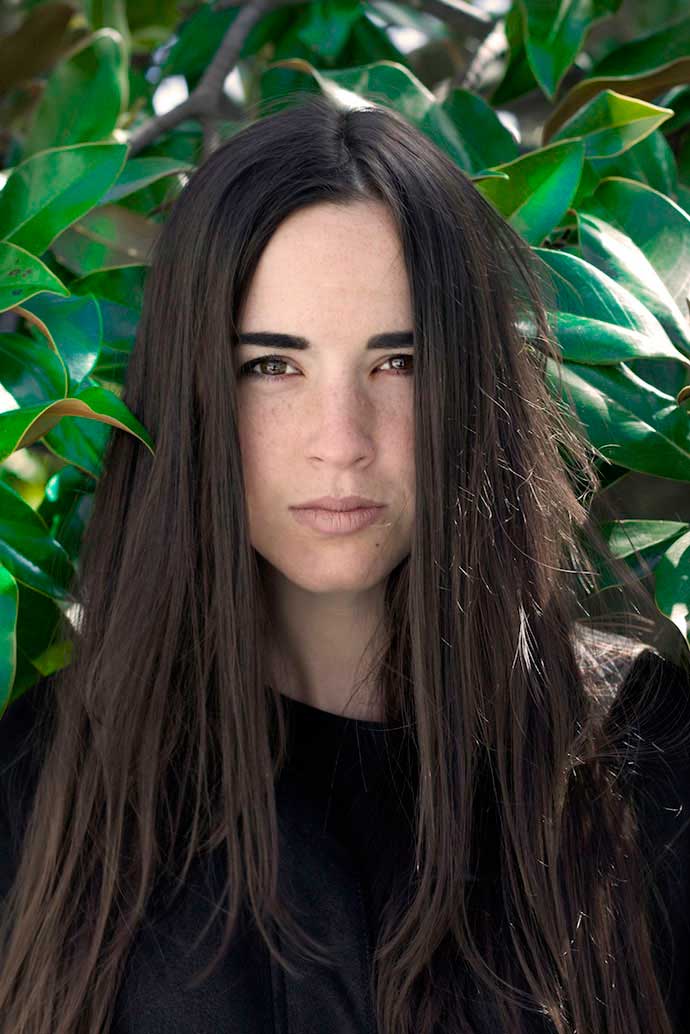
Portraits by Filep Motwary.
28th International
Fashion & Photography Festival
Hyères 2013
April 26>29
hyeres express: FLORIANE DE SAINT PIERRE
-Paris-based Floriane De Saint Pierre needs no introduction as today she considered as one of the ten most powerful women in fashion and beauty. She set up Floriane de Saint Pierre & Associés back in 1990. Twenty three years later she is the person all important fashion houses turn to in search for help to find an executive or designer. The list of successful matches consists of putting Christopher Bailey at Burberry, finding Alber Elbaz’s first creative director position, among so many others.
This year, she serves as jury member for the 28th edition of the Hyeres Festival, and answers the questions of the Hyères blogs.
Floriane de Saint Pierre, portrait by Ben Baker.
MalibongweTyilo: Having been responsible for hiring some of the biggest names, what would you say is the most common quality amongst designers who are able to head these successful mega brands?
Each of the designers has a crystal clear vision of their personal aesthetics. The most important factor for them has been their ability to look ahead of their time and translate their vision into something that you identify with.FilepMotwary: How relevant is creativity to the way the fashion industry functions today?
We can draw a parallel between the street photography of fifty years ago and what we see in fashion and design bloggers today- there has always been creativity, but what we are seeing is a huge shift in its expression. The expression of creativity is effortless today. However, creative design has never been more relevant and necessary than it is today. From fashion brands to Apple and Evian, etc. global brands absolutely recognize the importance of design as a factor in strong-value creation.AntoineAsseraf: Does your work end once a designer has been selected and hired
– or do you stay involved somehow ?
We always stay in touch.BrunoCapasso: Today the world imposes a new way of thinking, a reinvention in fashion, what new thing do you search in the new designers? How far does the media influence and disrupt your choices?
Designers must possess a personal aesthetic that resonates not only in fashion, but functions as a global creative proposition. Everyone today associates themself with a creative tribe and they are very demanding with the integrity- design, quality, services, and reputation- of a brand. Media is great for this- it is what gives design talent the chance to become visible and if there is genuine talent there, the media will be very supportive and loyal.SeanSantiago: The disconnect between Hedi Slimane’s last collection for Saint Laurent Paris and the work of his predecessors couldn’t be more striking or controversial. When judging these young designers based on their creativity and ingenuity, do you find yourself reconsidering the standards to which you hold a commercial designer like Slimane?
A product today makes sense only if it captures and reflects or even anticipates the profound sociological evolutions of its time. Hedi Slimane is a designer who thinks globally and very much ahead of his time. He knows what Saint Laurent means today.VogueGermany: Is there any candidate you’re already keeping an eye on ?
Yes, of course!28th International
Fashion & Photography Festival
Hyères 2013
April 26>29
hyères express: felipe oliveira baptista
-“a screen to the brain” is what Felipe Oliveira Baptista wants to show us in Hyères.
Winning the Hyères award in 2002, then the ANDAM Award, “FOB”, as he is nicknamed, made himself a name showing in Paris over the last 10 years, and is now also the creative director of Lacoste.
As he prepares his return to Hyères, this time as Jury President, he faces the inquiries of our team of bloggers…
Felipe Oliveira Baptista by René Habermacher.
Filep Motwary: If I asked you to look back to the beginning of your career and compare how the industry worked then to how fashion functions today, what would you say are the biggest changes?Everything has speeded up a lot, more collections, pre-collections, collaborations & capsules. Internet gave way to a whole new way of spreeding new talent, ideas and concepts. it is a very different landscape from the beginning of the century. On the other end, we seem to live in an era where there is too much of everything and by the time something new is found, it is already finished.
Warhol’s 15 minutes have turned into 15 seconds.
Antoine Asseraf: Winning Hyères + Winning the ANDAM + Consulting for other brands… is that the only path for French-based designers to establish themselves today ?
I think Paris is the toughest fashion week for a youg designer. Between all the big houses and a strong presence of other international designers, it makes the spotlight smaller; so Hyeres & the Andam are a great help to get your name out there.As for working for other brands, if you are independent and do shows, it is almost mandatory.
Sean Santiago: How do you keep a sportswear brand such as Lacoste relevant on an international scale, and is international appeal vital for a successful brand? Where does that appeal come from – catering to diverse markets or maintaining a uniquely French aesthetic that people find desirable?Lacoste is relevant on an international scale with more than 1500 shops world wide. We create a base and main message through the show collections, pre- collections and advertising campaigns, but there are regional adaptations done to answer local needs.Bruno Capasso: You being Portuguese felt any difficulties to enter in the market, even though you have a British training? What do you think of Portuguese fashion today? Which are the things that need to be improved so they have more global approach?I don’t know…I do not think my nationality went for or against me, I believe individuality is stronger than one’s nationality.
Vogue.de: You are going to have an exhibition at Hyères as well. What are you going to display?“A screen to the brain” is an installation made of 100 different sized screens that go through the creative process of a collection: references, collages, drawings, videos to the pages of fashion magazines.
This installation will evolve and will be shown again in a FOB exhibition starting next october in MUDE, Lisbon.
hyeres express: maurice scheltens & liesbeth abbenes
-“The specialty of Scheltens & Abbenes is to meticulously arrange objects” claims the biography of photography duo Maurice Scheltens & Liesbeth Abbenes. Working since 2002 as a duo, the minimalist compositions they painstakingly compose have earned them attention from clients and editors alike.
As part of the Hyères 2013 Fashion Jury, they answer the questions of the blog partners – Un Nouveau Ideal by Filep Motwary, *Fruitpunch by Sean Santiago, BRRUN by Bruno Capasso, Vogue.de, Malibongwe Tyilo and The Stimuleye, of course.
Liesbeth Abbenes. Photo by René Habermacher.
Filep Motwary: How does a garment get your attention? What are you searching for while on set?
Maurice ScheltensA sensitivity in material and design. Looking at a garment it often tells if the designer understands it’s own work without stopping to early (or to late) in the process. This attitude is connecting in the way we are also trying to stretch our own sensibilities.Sean Santiago: Your work is striking in its simplicity and for its reductive qualities – is fashion more interesting to you in theory more often than in its execution?
We are more interested in what we see then in what we know or should know. After ‘building’ is the moment of truth. Our curiosity by testing an idea for it’s visual qualities is the driving force. That is also why we keep on searching, experimenting and checking during the shoot instead of making photographs from a sketch made on the drawing table. This doesn’t mean that thoughts or drawings as they are can be beautiful and interesting to. It’s a matter of where to put all these aspirations.
Maurice Scheltens by René Habermacher.
Antoine Asseraf: As jury members used to shooting Fashion as objects, can you abstract the mise en scene, the show, the person to judge only the garments ?
Actually we see the same struggle and solutions in the garments as we face while shooting fashion or any other object in front of the lens. Maybe it’s a healthy distance that we have looking at fashion because we’re not ‘over informed’. We’re responding to what we see with the same critical eye as we do in our own work.
Bruno Capasso: How do you work as a duo – do you have 2 distinct visions ?
Our collaboration has been growing over the past ten years. It’s an evolution in which we grow individually towards each other and makes it difficult to say what comes from who. Individual credits would be out of place. See it as a chess game in which one makes a move and the other responds onto it… on and on.

welcome to marie laure’s
-The Stimuleye is proud to present the Hyères 2013 teaser trailer – Welcome to Marie Laure’s, starring Suzanne von Aichinger as the reincarnation of the legendary Marie-Laure de Noailles. Of course.
International Fashion & Photography Festival 2013
Hyères – TeaserApril 26 – 29, 2013
Villa Noailles, Hyèreshttp://www.villanoailles-hyeres.com/2013/
Film by Antoine Asseraf & René Habermacher
starring Suzanne von Aichinger
as Marie Laure de NoaillesStyling by Suzanne von Aichinger
assisted by Simon Gensowski & Laure GrandonHair by Panos Papandrianos @ CLM UK
Make-up by Min Kim @ Airport AgencySound design by Ca Va Cheri

davide balliano
-He works across many mediums, makes work and research constantly and needs to have a lot of order in his life.
New York-based Italian artist Davide Balliano had a conversation with me about his artistic trajectory, his work, rock climbing, his influences, his love of intervention and his first show in Paris at the Galerie Michel Rein.
Davide Balliano UNTITLED_Woman V Ink on book page 21x26,8 Cm 2013 Courtesy: Michel Rein Gallery, Paris
Lynsey Peisinger: Tell me a bit about your life and your path as an artist.
Davide Balliano: I was born and grew up in Torino, in the northwest of Italy. I was there until I was 18 and then I started in high school studying advertising and graphic design. It was a very peculiar school, a very specific school, which had a lot of elements that are still useful for me now. Especially the graphic design elements, the study of the image, the history of the image, art history. All of that is still informing my work today.
After that, I moved to Milan where I studied photography at Bauer, which is a fabulous school of photography. It is probably the last public school of photography that is left in Italy. What I liked of the school was the approach that they had, that I think they still have now, where rather than teaching “photography as a job”, they tried to raise us as artists working in the medium of photography. They train you as an artist who used the tool of photography. Then what you do with that tool is your choice.
Two years after school, I went to Fabrica, which is a large artist residence in Treviso, in the north east of Italy, a half hour from Venice. It is a beautiful place. A huge building built by Tadao Ando and there are usually approximately 40 artists in residence. It was very commercial-based. There is not much interest in pure artistic research. It’s more applied art. It was a very good experience–they pay you be there, they give you studio, they pay for all of your materials, they give you an apartment. You don’t have to worry about anything. But, even if it was great, it sort of crushed my relationship with photography. Fabrica had a very strong way of shaping the people that were there, so they were not making it a mystery that they couldn’t care less about the kind of photography that I was doing! I was very young, I was 21.
After Fabrica, I stayed one more year in Milano, then I got badly bored of staying in Italy. So I moved to NY in 2006. And it is in the early time in NY that I started to do other stuff. I felt that this move to NY was sort of giving me a clean cut from everything that I did until then. I sort of put photography a bit on the side and I started to draw and to intervene, but still on photographic images. I assume that because of my background in photography, I always have a difficult time starting anything from a blank background, you know from a white slate. For me, it has always been terrifying!
Davide Balliano UNTITLED_Barbaro Watercolor and acrylic on book page 18x25 Cm 2012 Courtesy: Galerie Rolando Anselmi, Berlin
LP: How did you start to move into the mediums you are working with now?
DB: So I started to print out images, mainly from the internet at that time. I still collect a lot images just for my inspiration. And I started to draw freehand on them, mainly abstract geometrical mess! Abstract scribbles, nothing with a precise meaning. Pretty soon, it sort of got clear that the issues that I had with photography were still there–even if I am intervening on top, I still had to take care very much of the meaning of the background image.
There are some images that you can just use for their mood, but there are other images that have a precise meaning that carries responsibilities. I think that this is something that you can use but you need to be conscious about it.
I always hate any kind of work in any kind of medium that just takes strong images and slams them there without standing by it. I always find that it’s a very cheap shortcut. It is something that I always hate.
So, then I started to draw on art history images because I felt that they left me more freedom somehow because there is already a big gap. You are more free to relate with the feeling of the image rather than with historical facts. The facts are there and I agree that I should deal with that, but there is a distance so there is a larger filter. So if I make a drawing on top of a portrait of a king, I should probably do research about who it is etc, but I don’t. And most people wouldn’t say “why did you make a drawing on this king and not on another one?”.
If you do the same kind of thing in photography, it is difficult because photography is such a young medium that almost any photographic image is in a historical context. So from there, the intervention grew more and more precise and became more and more essential. So if you take a drawing of four or five years ago, which was abstract and geometrical, but still messy and not so calculated, they sort of condensed somehow and at some point, it felt a need to take this intervention that I was doing on paper and put it on other mediums.
I burned that town just to see your eyes shine Wood and glass 137x48x48 Cm 2012 Courtesy: Galerie Rolando Anselmi, Berlin Photo: Nikki Brendson
LP: Tell me a bit about the medium of performance.
DB: Performance, which I do although rarely, is a different thing although I feel that it is strongly connected to….photography. It is interesting, I feel that performance is strongly connected to photography because I still feel it as the production of an image. An image that is locked by a location and by a time. I am very fascinated by the potential of making a legend with performance, not necessarily mine. Sometimes you see performances that are unrepeatable–the original work is born in one place at a specific time and if you were there, there is nothing that can repeat that moment. And it gives you something that is so unique, it sort of makes you part of the history of the work, much more than in other mediums.
Most of the time in other mediums, the work is done by an artist and then is shown. And the artwork has a life and it will be the same life for the next many many years. But a performance is in a place and in a moment and if you were there, you had the privilege of being part of it and then nothing will take that away. I find it fascinating. And I relate to it as the creation of an image, practically speaking.
LP: It sounds like performance gives you an opportunity to experience being an artist in a different way.
DB: Exactly. And also seeing what it means for other artists. It has been great because I am completely incapable of doing it in any other medium. I am sort of a control freak for anything else that I do. I know that in performance, I very much enjoy opening up to collaboration and seeing what it brings.
LP: At which point in your life did you realize that you wanted to be making art? Was it from childhood? Did you go to that graphic design school because you knew that already about yourself?
DB: Well, I will say that it depends. I always, since when I was a kid, felt an extreme need for creative expression. So I always had no doubt that I would be doing something creative in life. But, the decision to make exclusively art research sort of developed over the years. It felt like everything else just dropped and it stayed there. For all of my school time, I had the idea that it was impossible to only do that.
I always thought “I need to do something else on the side”. For example, I thought I could do graphic design while doing other work. Also with photography, but photography was even closer to making pure artwork. But it was an idealistic idea that I could be an artist but also make commercial stuff. I needed to take a decision between the two things. And I think that especially when you are young, people want one or the other.
Another thing that I understood–I sound like an old grandfather saying “when I was young…etc”! — When I was in high school I was doing a lot of rock climbing and at a certain point I had a trainer and was training five days a week. I loved it, but I liked to go out and go to concerts too. I had my social life which was very important to me. Everyone else there was like a monk about it. Just training, training, training. They ate only certain food, they were constantly on a diet. Complete dedication. I understood that I couldn’t at all put in that type of dedication and I couldn’t compete with people that were that dedicated to it. And later, I felt the same way with photography.
If you are trying to do something good, you should consider that most likely there is somebody else that is trying to do it and he is going to be very good at it and he is going to put all his energy into it, he is going to make tons of sacrifices and he is going to go through hell to achieve it. So if you are not up for that, you are in for a competition that will never bring you anywhere. So photography for me was sort of like that.
I was in Milano therefore everything was about fashion photography. I mean, fashion photography was fun! I would go to a set, with models and people and music. It’s all fun. But if you are trying to do it, you are in competition with 500 kids obsessed with their freaking portfolios who are putting their money into making fashion photography. I’m like “hell no”! I have to be paid to make fashion photography, not the other way around. People would tell me that I had to put together a fashion photography portfolio and then when people look at you because of that, you bring in your art research. But for me, I knew I would not have the energy to do that because I was already putting all my energy into my research. And I sort of became clear that it wouldn’t work. I had to push on thing or the other.
So I decided only to concentrate on art. I assisted for many years. I wanted to learn from an artist. I wanted to learn about art-making and also the practical side of it.
Davide Balliano UNTITLED_Grid27 Acrylic on linen 120x180 Cm 2012
LP: When you came to NY, you assisted Marina Abramovic for four years. How did that experience influence your work and how did it prepare you for your own path as an artist?
DB: For me, Marina was like my own private university. She taught me everything that I know about surviving as an artist.
Independently of the love that I have of her work–I approached her because I always had an extreme fascination with her work– the privilege that I had when working with her was that I was in contact with the private side of her. And what I gained from the private relationship is to see how she is completely dedicated to her work. Marina is all work. And there is an insane amount of energy and dedication that she puts into it. Her work is her life, there is no separation, there is no in between.
The personal investment that she makes in her work, I assume gives her this concentration that comes out so clearly in the work. And, other than that, she is such a big artists that if you work with her for four years, afterwards you can truly do anything. I came out of that experience being practically scared of nothing.
Marina works at such a level of intensity that there is really nothing that you can’t do after that. It is like boot camp. You are so used to working under pressure –good pressure, but pressure–daily. Everyday was the same amount of concentration and speed and pressure. The responsibilities are always big. There is never a day that you go and pick up flowers! Every day is something big, something important, something that you can’t mess up. When you do that every day for four years, you come out and truly its like those American movies about Marines. You can really do anything!
LP: You seem to have an approach to your work that is extremely organized and structured. It seems to me that are an artist who approaches your work like one might approach any business in terms of how you structure and use your time and also how you interact with and deal with people. I wonder if working with Marina influenced that or if you were always someone who could self-motivate and give order to your life.
DB: Definitely working with Marina, and my other assistant jobs, gave me that structure. Marina is naturally 80 percent of it, but everything contributed. Assisting fashion photographers meant being efficient and fast. There are a lot of responsibilities and you have to work under pressure, so you get used to needing to maintain focus. Keeping your concentration on the work itself under all the pressure seems to me to be the secret that all of these big guys shared.
There are tons of different kinds of artists and I know fabulous artists that work in complete chaos and it’s fine for them. Their art can come out of that. They can do nothing for weeks and then disappear and work day and night for a month and then come out like drained zombies, but the resulting work is marvelous.
But that’s not for me. The less I do, the more in pain I feel.
Davide Balliano PICATRIX, installation view Courtesy: Michel Rein Gallery, Paris
LP: Tell me about that show in Paris.
DB: The show in Paris started with an invitation from Eugenio Viola, a wonderful curator that I worked with last January. He invited me to have this little show and he set the theme of the show. He asked me to work with the concepts of alchemy and symbolism and sort of esoteric feelings, which is something that is present in my work even if I don’t always relate to those things in my life.
There are four works on paper, two paintings on board and one sculpture. We see a combination of different mediums and the dialogue that they have with each other, which is very important for me. I never make a show that deals with only one medium because it feels like a small part of what I do. I feel like I can’t say what I want to say with one medium, I have to put them together.
In the past Alchemy was called “the great work” and I love it. I like the utopic idea that through my work, and the elements given to me, I can control these elements and have a higher understanding of who I am and a higher consciousness.
Eugenio asked me to consider these things and to put together a little show that gives my view on these topics, so I did.
LP: What is the last thing that stimulated you?
DB: The film The Turin Horse by Bela Tarr. It is really stuck in my mind and I keep on thinking about it. It was very very strong for me. And not because I am from Turin! Its strict and minimal and powerful and its a complete tragedy. There is no space for hope, no space for light, like a classic tragedy. Everything is rotting and closing in on you. Sometimes I feel that tragedy might be more inspiring than happy thoughts. Happy thoughts are private while tragedy can be shared and if you recognize the suffering in someone else, it can make you feel less alone in your own troubles. That is probably why all of the work that I strongly admire has a heavy portion of tragedy and weight.
PICATRIX at Galerie Michel Rein, curated by Eugenio Viola
http://michelrein.com/
http://www.davideballiano.com/

